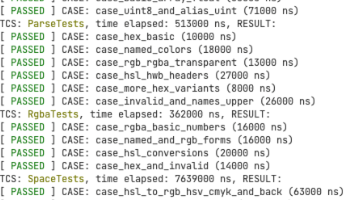tensorflow生成pb模型文件及加载pb文件预测
·
再进入正题前,我们先介绍一下checkpoint(ckpt)和pb的区别和联系
| model | 保存方法 | 结果文件 | 加载 |
| ckpt | tf.train.Saver() |
主要的4个文件 checkpoint model.ckpt.data-xxx model.ckpt.index model.ckpt.meta |
tf.train.Saver() saver.restore() |
| pb |
|
pb文件 | 见下文 |
pb模型文件具有语言独立性,可独立运行,封闭的序列化格式,支持其他语言解析,而且模型的变量都是固定的,模型的大小减小,一个模型文件也便于之后的使用。
tf生成pb文件
import tensorflow as tf
from tensorflow.python.framework import graph_util
with tf.Session(graph=tf.Graph()) as sess:
# 定义输入变量名
x = tf.placeholder(tf.int32, name='x')
y = tf.placeholder(tf.int32, name='y')
b = tf.Variable(1, name='b')
xy = tf.multiply(x, y)
# 输出,需要加上变量名
output = tf.add(xy, b, name='output')
sess.run(tf.global_variables_initializer())
# convert_variables_to_constants 需要指定output_node_names
constant_graph = graph_util.convert_variables_to_constants(sess, sess.graph_def, ['output'])
print(sess.run(output, feed_dict={x: 2, y: 5}))
# 写入序列化的pb文件
with tf.gfile.FastGFile('model.pb', mode='wb') as f:
f.write(constant_graph.SerializeToString())tf加载pb文件
from tensorflow.python.platform import gfile
sess = tf.Session()
with gfile.FastGFile('model.pb', 'rb') as f:
graph_def = tf.GraphDef()
graph_def.ParseFromString(f.read())
sess.graph.as_default()
tf.import_graph_def(graph_def, name='') # 导入计算图
# 需要有一个初始化的过程
sess.run(tf.global_variables_initializer())
# 输入
input_x = sess.graph.get_tensor_by_name('x:0')
input_y = sess.graph.get_tensor_by_name('y:0')
op = sess.graph.get_tensor_by_name('output:0')
res = sess.run(op, feed_dict={input_x: 5, input_y: 5})
print(res)tips:应用到自己的程序中记得在输出添加变量名(如:output = tf.add(xy, b, name='output')),加载时获取输入输出变量名,将值传给输入变量,sess.run()即可

新一代开源开发者平台 GitCode,通过集成代码托管服务、代码仓库以及可信赖的开源组件库,让开发者可以在云端进行代码托管和开发。旨在为数千万中国开发者提供一个无缝且高效的云端环境,以支持学习、使用和贡献开源项目。
更多推荐
 已为社区贡献2条内容
已为社区贡献2条内容







所有评论(0)